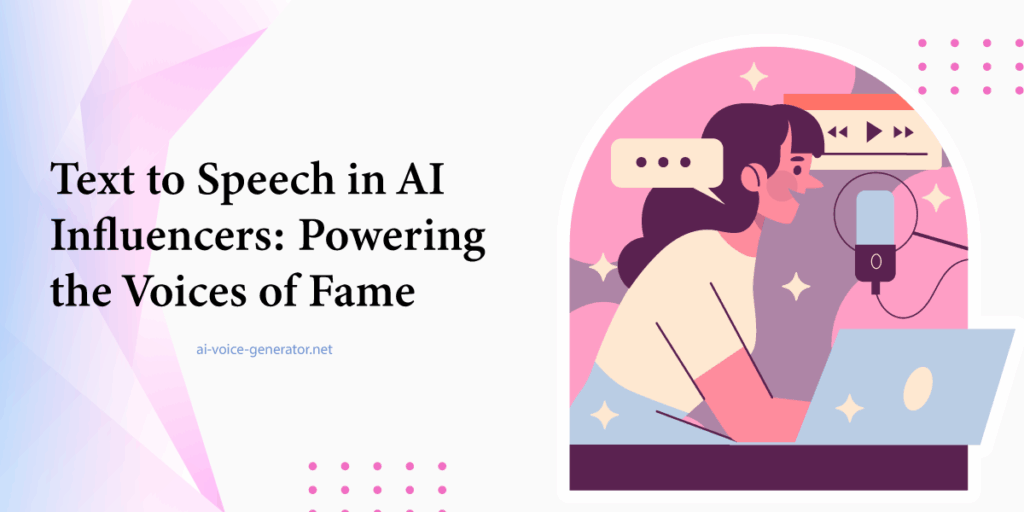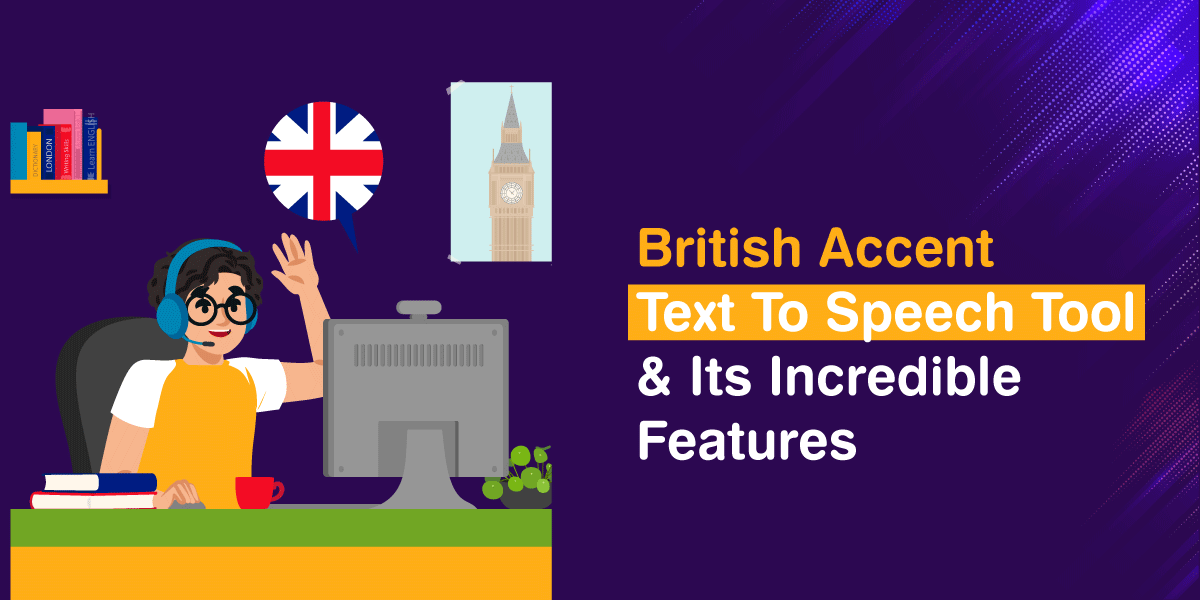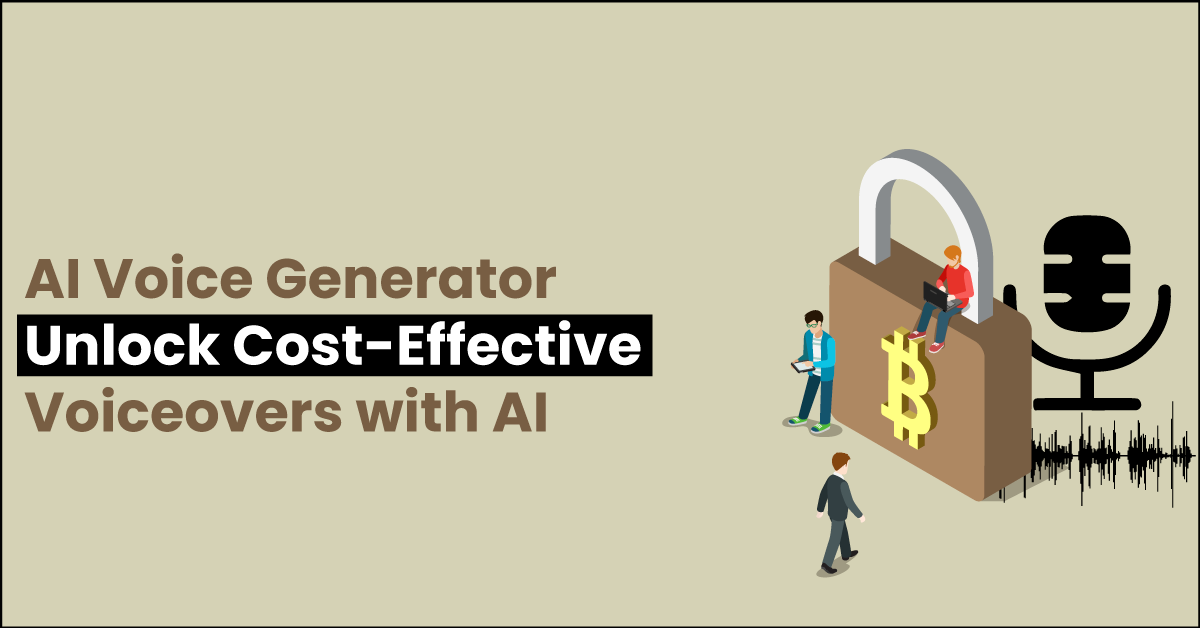
Text to Speech in AI Influencers: Powering the Voices of Fame
In the evolving world of digital stardom, one trend is catching fire in 2025 like never before—AI influencers. From fashion to music to lifestyle branding, virtual personas with curated identities are stealing the spotlight. What’s even more captivating is how these personalities are given life, not just with visuals and algorithms, but through synthetic yet human-sounding voices. This is where text to speech technology plays its most unexpected role.
These AI-generated celebrities are not just static avatars anymore. Their ability to speak, emote, and communicate has become their gateway to engagement and authenticity. Today, as we scroll past digital influencers doing livestreams, product reviews, and interviews, we often forget that many of them aren’t real people—they’re scripted, styled, and voiced entirely by artificial intelligence.
Among the core technologies powering this shift, AI text to speech solutions are proving indispensable, especially when it comes to making AI influencers feel “real” to their growing audiences.
How Text to Speech Free Tools Are Reinventing Influence
In the early days, AI influencers existed as silent mannequins, sharing photo dumps and product placements. Fast forward to now, and they’re chatting in livestreams, posting voice notes on social platforms, and even starring in audio-only podcasts. This leap wouldn’t be possible without text to speech free tools becoming more sophisticated, accessible, and context-aware.
These tools allow developers and content creators to give each digital persona a signature voice, without needing an actual human voice actor. The freedom and flexibility of using free online text to speech platforms have empowered creators to experiment at scale and low cost, refining the voice identity of each AI influencer with precision.
What’s fascinating is how the free options available today often rival the quality once only found in paid enterprise software. Some influencers even have multiple voice profiles across languages, thanks to the growing capabilities of cloud-based text to speech generator platforms.
The Aesthetic Power of Voice in the AI Era
When we talk about the visual branding of digital personalities, we usually think of appearance, colors, or fashion sense. But in 2025, voice has become just as essential to an AI influencer’s aesthetic as their visual form. From soft, poetic tones to upbeat, energetic deliveries, text to speech voices now define the mood and personality of these virtual stars.
The rise in demand for authenticity—even from AI influencers—has forced creators to fine-tune every syllable. This is where voice style and tone variability, offered by advanced text to voice generator tools, truly shine. These voices are not just understandable—they’re expressive, distinctive, and carefully matched to the influencer’s vibe.
When an AI model hosts a Q&A session or narrates a reel, that vocal delivery can make or break viewer trust. Text to speech systems trained on emotional data are helping bridge the gap between uncanny and believable. The result? A digital entity that not only looks but also sounds human.
Platforms Driving the AI Influencer Boom
It’s impossible to ignore the role of social media giants like Instagram, TikTok, and YouTube in accelerating the rise of AI celebrities. These platforms thrive on engaging content, and voice-driven storytelling has been a natural evolution. As a result, the demand for tools that support text to speech online content creation has exploded.
Livestreams, comment replies, reels, and collaborations now rely on timely and high-quality vocal content. For creators managing multiple virtual personalities, the efficiency of AI text to speech becomes critical. Voice content can be generated and localized across regions within minutes—no need for separate actors or hours of retakes.
And it’s not just individual creators leading the charge. Brands are now forming entire marketing campaigns around AI influencers. These campaigns often involve elaborate scripted interactions and dialogues, all voiced using text to speech generator technology.
Why Brands Prefer AI Voices in 2025
From a branding perspective, consistency and control are everything. When working with human influencers, variables like voice tone, delivery inconsistency, or even burnout can disrupt campaign flow. But with AI voices, especially those generated from text to voice generator platforms, this concern disappears.
Brands can now create character-driven narratives that sound exactly how they’re imagined. Once a voice is locked in, it becomes a permanent asset—unlike a human voice that may age, change, or become unavailable. With text to audio free solutions offering increasingly customizable outputs, advertisers are jumping in full force.
More importantly, the freedom to align voice style with brand identity—across languages, cultures, and platforms—gives marketers unprecedented flexibility. This has opened doors for global expansion using one virtual spokesperson, enhanced with region-specific speech generated through text to speech voices.
The Human Psychology Behind the Virtual Voice
Why do people trust and follow AI influencers in the first place? The answer lies in the voice. As humans, we associate tone, inflection, and rhythm with authenticity. Without a convincing voice, the illusion of connection breaks. That’s why AI text to speech platforms have invested heavily in neural networks that can replicate human emotion, pauses, hesitations, and even natural stutters.
These subtle details are what make an AI voice feel spontaneous rather than robotic. Whether it’s an AI fashion model doing a closet tour or a virtual gamer narrating highlights, the vocal performance has to resonate with listeners. That resonance comes from careful engineering, paired with access to high-quality text to speech online tools that don’t sound synthetic.
If you’re exploring tools to add voice to your AI project or virtual persona, a powerful option is this AI Voice Generator, designed to help bring your characters to life with authentic, expressive, and real-time vocal output.
Multilingual Voices and the Rise of Global AI Fame
Localization is another dimension where text to speech free tools are playing a huge role. Digital influencers aren’t limited by geography; they’re followed by global audiences. Thanks to the capabilities of multilingual text to speech voices, these AI personas can speak to followers in Tokyo, London, and São Paulo—each in a native accent or dialect.
The ability to generate localized speech on demand has empowered creators to enter new markets without rebuilding a new brand from scratch. Using free online text to speech, they simply clone the content in a new language, layer a native voice, and launch globally. For followers, it feels like their favorite AI influencer just got more relatable.
Challenges and Controversies Around AI Influencer Voices
No evolution comes without criticism, and the synthetic voices of AI influencers are no exception. As the line blurs between real and virtual, ethical concerns arise. Are followers being misled into emotional connections? Are brands disclosing the use of text to speech generator systems behind their influencer campaigns?
Critics also argue that using text to audio free tools to impersonate humans, especially without clear disclosure, can manipulate trust. Some countries are already exploring regulations that would require virtual influencers to identify themselves as artificial, particularly if the voice sounds indistinguishably human.
The industry still wrestles with these gray zones, even as creators push forward to meet audience expectations. But what’s undeniable is that the demand for better, more human-like voices is only increasing.
The Future of Virtual Voice Stardom
As we look ahead, AI voices may soon become fully autonomous creators, capable of ideating, scripting, voicing, and publishing content in real time. The current dependency on creators for input may shift, as text to voice generator systems start integrating with generative video tools and character AI systems.
This means that shortly, an AI influencer could conduct a live podcast, respond to real-time chat, and voice reactive content—all without a human in the loop. With text to speech tech at its core, we’re not far from a world where millions of followers listen daily to a completely synthetic voice.
And yet, what makes it work isn’t just the technology—it’s the way that voice is crafted, customized, and emotionally tuned. That’s the art behind the science.
FAQs
Yes, they allow you to voice AI influencers with consistent, human-like speech at scale.
Most platforms offer a wide range of voice styles, accents, and emotional tones.
It is, but disclosure rules vary by country, especially if the influencer mimics a real person.
Many free tools offer commercial licenses, but always review the terms before publishing.
Not always—they often have different voices tailored to each audience or platform style.

